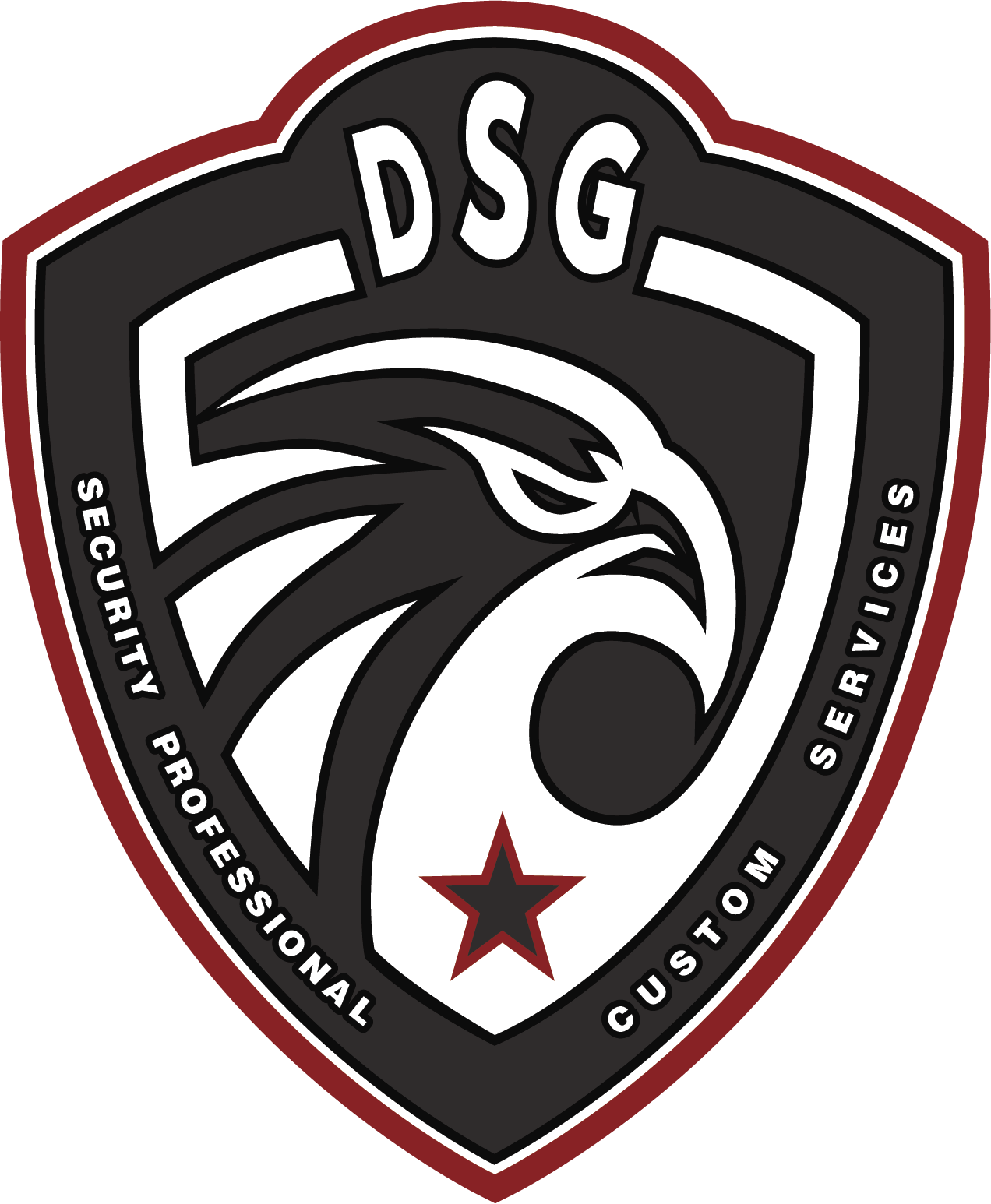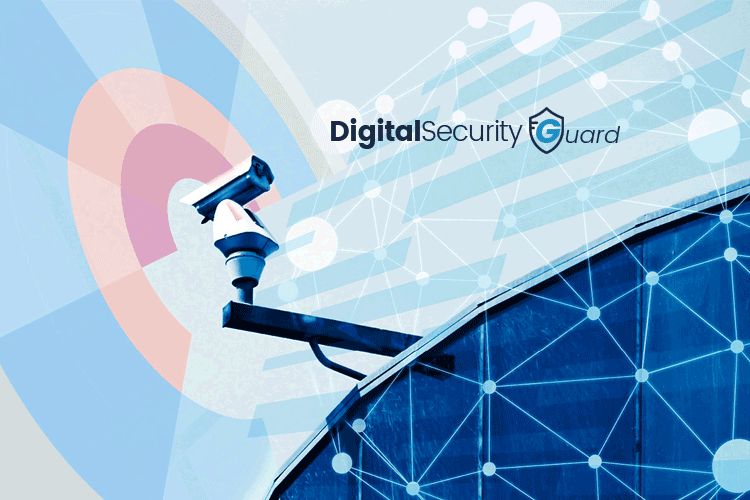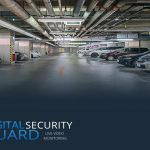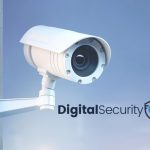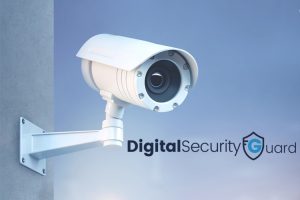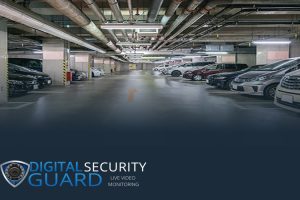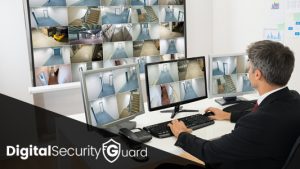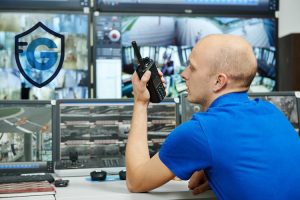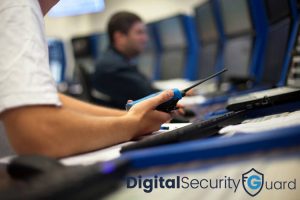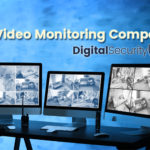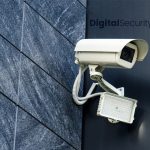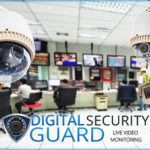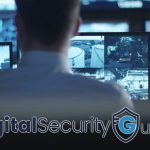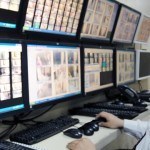When property managers and security directors evaluate remote video monitoring costs, they’re often surprised to discover potential savings of 60-90% compared to traditional security methods. With businesses across the nation spending over $40 billion annually on security services, understanding the true cost structure of remote monitoring versus alternatives has become critical for budget-conscious decision-makers.
Whether you’re managing a single facility in Florida or a nationwide portfolio of properties, remote video monitoring cost represents one of the most significant opportunities for security budget optimization without compromising coverage quality. This comprehensive guide breaks down actual pricing, hidden costs, ROI calculations, and cost factors that affect your investment in professional remote monitoring services.
Understanding Remote Video Monitoring Cost Structure
What Determines Remote Video Monitoring Cost
Remote video monitoring cost varies based on several key factors that property managers must understand when budgeting for security services. Unlike traditional security guard costs that remain fixed regardless of effectiveness, remote monitoring pricing reflects actual coverage needs and technology requirements.
Coverage Area and Camera Count represents the primary cost driver. Most providers charge per camera or per location, with costs ranging from $20-150 per camera monthly. Properties requiring comprehensive coverage of multiple entry points, parking areas, and common spaces will see higher monthly costs but often achieve better per-square-foot security value.
Monitoring Intensity Level affects remote video monitoring cost significantly. Basic motion detection monitoring costs less than active surveillance with human verification. Premium services including two-way audio intervention, immediate law enforcement coordination, and detailed incident reporting command higher prices but deliver superior security outcomes.
Technology Requirements impact initial and ongoing costs. High-definition cameras, night vision capabilities, weatherproof housing, and redundant connectivity add to equipment expenses but provide better video quality for incident resolution and evidence collection.
Integration Complexity with existing access control, fire safety, or building management systems can increase installation costs but often provides better overall security value and operational efficiency.
Typical Remote Video Monitoring Cost Ranges
Basic Monitoring Services typically cost $20-50 per camera monthly for standard definition recording with motion detection alerts. This entry-level pricing provides passive monitoring but limited human intervention capability.
Professional Monitoring Services range from $50-100 per camera monthly and include licensed security professional oversight, immediate incident response, and law enforcement coordination. This pricing tier represents the optimal balance of cost and security effectiveness for most commercial properties.
Enterprise Solutions cost $100-200+ per camera monthly for complex multi-location deployments with advanced analytics, custom integration requirements, and dedicated account management. Large portfolios often negotiate volume pricing that reduces per-camera costs significantly.
Installation and Equipment Costs typically require $1,000-5,000 per camera including professional-grade equipment, installation labor, and system configuration. Quality installations using Power over Ethernet (PoE) cameras provide long-term reliability that justifies higher upfront investment.
Remote Video Monitoring Cost Compared to Traditional Security
Traditional Security Guard Costs
Understanding traditional security expenses helps property managers appreciate remote video monitoring cost advantages. On-site security guards cost $35,000-50,000 annually per position, with benefits and insurance adding 30-40% to total compensation expenses.
24/7 Coverage Requirements necessitate 3-4 full-time guards to provide continuous security, pushing annual costs to $140,000-280,000 per location. Additional expenses include supervisor oversight, training programs, uniforms, equipment, and workers’ compensation insurance.
Hidden Costs often surprise property managers during budget reviews. Recruitment expenses for high-turnover positions, temporary staffing during sick days or vacations, and management overhead for supervision can add $25,000-50,000 annually to total security expenses.
Effectiveness Limitations mean traditional guards may miss incidents during breaks, shift changes, or while focused on other duties. Security incidents during off-hours or in areas not currently patrolled often go undetected until after damage occurs.
Remote Monitoring Cost Advantages
Digital Security Guard’s remote monitoring services typically cost $40,000-80,000 annually for comprehensive multi-location coverage, representing immediate savings of 50-80% compared to traditional security guard expenses.
Continuous Coverage without human limitations means no breaks, shift changes, or distraction-related gaps in security oversight. Licensed security professionals monitor multiple camera feeds simultaneously, providing better coverage than single-location guards.
Immediate Response Capability includes real-time incident detection, two-way audio intervention, and law enforcement notification with video verification. Response times average 30-60 seconds versus 5-15 minutes for mobile patrol services.
Scalability Benefits allow properties to add locations or expand coverage without proportional cost increases. A single monitoring center can oversee multiple properties across different states, providing consistent security standards at reduced per-location costs.
Industry-Specific Remote Video Monitoring Cost Analysis
Healthcare Facility Monitoring Costs
Healthcare properties face unique security challenges that affect remote video monitoring cost calculations. HIPAA compliance requirements necessitate specialized camera placement, access controls, and documentation procedures that influence pricing.
Compliance-Ready Systems typically cost 15-25% more than basic installations but provide pre-configured HIPAA compliance features, automated documentation, and specialized training for monitoring staff. This premium prevents costly compliance violations and audit failures.
Multi-Point Coverage for patient areas, pharmacy zones, and equipment storage requires comprehensive camera deployments. Healthcare facilities typically need 20-40% more cameras than comparable commercial properties, affecting total remote video monitoring cost but providing essential security coverage.
Emergency Response Integration with medical emergency services adds value that justifies higher monitoring costs. Immediate coordination with on-site medical staff during security incidents can prevent patient safety issues and liability exposure.
Cannabis Industry Security Costs
Cannabis facilities represent a specialized market where remote video monitoring cost must be evaluated against stringent regulatory requirements and high-value target risks. State cannabis security regulations often mandate 24/7 monitoring with specific resolution and retention requirements.
Regulatory Compliance Systems require 4K resolution cameras, 90-day retention periods, and continuous recording capabilities. These requirements increase equipment costs by 40-60% but ensure compliance with state regulations that carry significant penalties for violations.
High-Security Monitoring includes specialized protocols for cash handling, inventory monitoring, and unauthorized access prevention. Cannabis facilities typically pay premium rates of $100-200 per camera monthly but achieve ROI through theft prevention and regulatory compliance.
Track-and-Trace Integration with seed-to-sale monitoring systems provides comprehensive oversight that justifies higher remote video monitoring cost through operational efficiency and compliance documentation.
Construction Site Security Costs
Construction sites present unique challenges that affect remote video monitoring cost calculations. Equipment theft losses averaging $400 million annually nationwide make security investment essential for project profitability.
Mobile Monitoring Units designed for temporary deployment cost $200-400 per month per unit but provide flexible coverage that adapts to changing site conditions. Solar power and cellular connectivity eliminate infrastructure requirements that complicate traditional security installations.
Theft Prevention ROI typically justifies remote video monitoring cost within 60-90 days through prevented equipment losses. A single prevented theft of excavator or generator equipment often covers annual monitoring expenses for the entire project.
Multi-Site Coverage allows construction companies to monitor multiple active projects from centralized monitoring centers. Volume pricing for 5+ sites typically reduces per-site costs by 20-30% while maintaining consistent security standards.
Remote Video Monitoring Cost Factors and Variables
Geographic Cost Considerations
Remote video monitoring cost varies by geographic region due to local market conditions, regulatory requirements, and competitive factors. Properties in high-crime urban areas often justify premium monitoring services, while rural locations may require specialized connectivity solutions that affect pricing.
Florida Market Advantages include competitive pricing due to numerous security providers and favorable business conditions. Digital Security Guard’s Boca Raton headquarters provides local expertise for Florida properties while offering nationwide service capabilities.
Nationwide Pricing Consistency helps multi-location property managers budget effectively across different markets. Providers with national coverage can offer standardized pricing and service levels regardless of individual property locations.
Local Compliance Requirements may affect remote video monitoring cost through specialized equipment or monitoring procedures. Properties in jurisdictions with specific security regulations should factor compliance costs into their budget calculations.
Technology Cost Factors
Camera Quality and Features significantly impact both initial and ongoing remote video monitoring cost. Basic analog cameras cost $100-300 each but provide limited resolution and functionality. Professional IP cameras cost $300-800 each but deliver 4K resolution, night vision, and advanced analytics capabilities.
Infrastructure Requirements affect installation costs and ongoing reliability. Properties with adequate network infrastructure and power supplies can minimize installation expenses, while those requiring significant upgrades should budget $5,000-15,000 for infrastructure improvements.
Redundancy and Backup Systems add 20-40% to equipment costs but provide essential reliability for critical security applications. Backup power systems, redundant connectivity, and failover monitoring centers ensure continuous coverage during outages or maintenance.
Integration Capabilities with existing access control, fire safety, or building management systems can increase initial costs but provide long-term operational benefits and reduced total security expenses.
Service Level Cost Variables
Basic Monitoring Services provide motion detection alerts and recording capabilities at lowest cost but require property staff to respond to incidents. This option works for budget-conscious properties with on-site personnel available for security response.
Professional Monitoring Services include licensed security professional oversight, incident verification, and law enforcement coordination. Higher monthly costs are justified by immediate response capability and reduced false alarm incidents.
Premium Services feature dedicated account management, custom reporting, and enhanced response protocols. Large properties or those with special security requirements often find premium service costs justified by improved security outcomes and reduced management overhead.
Hidden Costs in Remote Video Monitoring
Equipment and Installation Expenses
Many property managers underestimate total remote video monitoring cost by focusing only on monthly monitoring fees while overlooking equipment and installation expenses. Professional installations require proper camera placement, network configuration, and system testing to ensure reliable operation.
Camera Equipment Costs range from $200-800 per camera depending on resolution, features, and environmental requirements. Weatherproof housing, night vision capabilities, and vandal-resistant construction add to upfront costs but prevent ongoing replacement expenses.
Installation Labor typically costs $200-500 per camera for professional mounting, cable running, and network configuration. Quality installations using Power over Ethernet (PoE) systems provide long-term reliability that justifies higher labor costs.
Network Infrastructure improvements may be necessary for reliable operation. Bandwidth upgrades, network switch installations, and backup connectivity solutions can add $2,000-10,000 to project costs depending on existing infrastructure quality.
Ongoing Operational Costs
Bandwidth Expenses for video transmission typically require 2-4 Mbps upload speed per HD camera. Properties may need internet upgrades that add $50-200 monthly to operational costs, though many businesses have adequate existing bandwidth.
Maintenance and Support costs vary by provider and equipment quality. Premium monitoring services often include equipment maintenance and technical support, while basic services may charge separately for repairs or system updates.
Software and Licensing Fees for advanced analytics, mobile access, or integration capabilities may add $10-50 per camera monthly to total remote video monitoring cost. These features often provide operational benefits that justify additional expenses.
Contract and Billing Considerations
Setup Fees and Activation Charges can add $500-2,000 to initial project costs. Digital Security Guard provides transparent pricing without hidden fees or surprise charges that complicate budget planning.
Early Termination Penalties in long-term contracts can create unexpected costs if service changes become necessary. Flexible month-to-month agreements provide better cost control for properties with changing security needs.
Equipment Buyout Options affect total cost calculations. Leased equipment may have lower upfront costs but higher long-term expenses, while purchased equipment provides better value for long-term installations.
ROI Analysis and Cost Justification for Remote Video Monitoring
Direct Cost Savings Calculations
Property managers can calculate immediate savings by comparing remote video monitoring cost to traditional security alternatives. A typical 100,000 square foot facility requiring 24/7 security coverage demonstrates clear ROI within 12-18 months.
Traditional Security Investment:
- 3 full-time guards: $150,000 annually
- Benefits and insurance: $45,000 annually
- Supervision and management: $25,000 annually
- Equipment and supplies: $10,000 annually
- Total Annual Cost: $230,000
Remote Monitoring Investment:
- Monthly monitoring services: $60,000 annually
- Equipment and installation: $30,000 (one-time)
- Network and infrastructure: $10,000 (one-time)
- Total First-Year Cost: $100,000
- Annual Savings: $130,000 (57% reduction)
Risk Mitigation Value
Theft Prevention provides quantifiable ROI that often exceeds annual remote video monitoring cost. Commercial property theft averages $15,000-50,000 per incident, making prevention worth significant security investment.
Liability Reduction through documented security procedures and immediate incident response can reduce insurance premiums and legal exposure. Properties with professional monitoring often qualify for 5-15% insurance discounts that offset security costs.
Operational Efficiency improvements include reduced false alarms, faster emergency response, and better incident documentation. These benefits provide ongoing value that accumulates over time.
Property Value Enhancement
Security System Value can increase property values by 3-7% according to commercial real estate studies. The permanent infrastructure and professional monitoring capabilities make properties more attractive to tenants and buyers.
Tenant Retention improvements reduce costly turnover and vacancy periods. Properties with visible security measures experience higher tenant satisfaction and longer lease terms that improve overall profitability.
Marketing Advantages allow properties to promote enhanced security as a competitive differentiator. Professional monitoring capabilities can justify premium rents and attract quality tenants who value safety.
Budgeting for Remote Video Monitoring Cost
Initial Investment Planning
Equipment Budget should allocate $1,500-3,000 per camera for complete installation including professional-grade cameras, mounting hardware, network infrastructure, and installation labor. Quality equipment provides 5-10 year service life that justifies higher upfront investment.
Installation Timeline affects cash flow planning. Most installations require 1-3 weeks from contract signing to full operation, allowing properties to plan budget timing accordingly.
Financing Options help spread costs over time. Equipment financing, service-based pricing, and lease arrangements provide flexibility for properties with budget constraints or cash flow preferences.
Ongoing Cost Management
Monthly Service Fees typically range from $2,000-8,000 monthly for comprehensive coverage of mid-size commercial properties. Predictable monthly costs help with budget planning and cash flow management.
Scalability Planning should consider future expansion needs when evaluating remote video monitoring cost. Providers offering volume discounts and standardized pricing help properties plan multi-location deployments effectively.
Performance Monitoring ensures cost-effectiveness through incident response metrics, false alarm rates, and security outcome measurements. Regular performance reviews help optimize service levels and costs.
Cost Optimization Strategies
Volume Discounts for multiple locations or large camera deployments can reduce per-camera costs by 15-30%. Properties with expansion plans should negotiate volume pricing structures from the beginning.
Service Level Matching ensures properties pay for needed capabilities without unnecessary premium features. Basic monitoring may be adequate for low-risk areas while critical zones require professional oversight.
Technology Lifecycle Planning helps optimize equipment replacement timing and costs. Upgrading cameras every 5-7 years maintains optimal performance while spreading costs over time.
Choosing Cost-Effective Remote Video Monitoring Services
Provider Evaluation Criteria
Pricing Transparency should be the first evaluation criterion when comparing remote video monitoring cost proposals. Providers who hide fees, require lengthy contracts, or use complex pricing structures often deliver poor value despite attractive initial quotes.
Digital Security Guard’s transparent pricing approach provides all-inclusive monthly rates without hidden fees, activation charges, or surprise billing that complicates budget management.
Service Quality Verification ensures cost-effectiveness through licensed security professionals, 24/7 monitoring center operations, and guaranteed response times. Low-cost providers often compromise service quality that reduces security effectiveness.
Technology Standards affect long-term costs through reliability, performance, and upgrade capabilities. Professional-grade equipment and redundant systems cost more initially but provide better total cost of ownership through reduced maintenance and replacement needs.
Contract and Pricing Considerations
Flexible Terms provide better cost control than long-term contracts with penalties. Month-to-month agreements allow properties to adjust service levels as needs change without financial penalties.
Scalability Options help manage costs as properties expand or reduce coverage needs. Providers offering standardized pricing and easy expansion capabilities provide better long-term value.
Performance Guarantees ensure cost-effectiveness through service level agreements, response time commitments, and customer satisfaction measures. Providers confident in their service quality offer meaningful guarantees.
Geographic Service Considerations
Local Expertise with nationwide capabilities provides optimal cost-effectiveness for multi-location properties. Digital Security Guard’s Florida base offers local market knowledge while providing consistent service nationwide.
Response Time Optimization through regional monitoring centers ensures fast incident response regardless of property location. National providers with multiple monitoring facilities provide better service consistency than single-location operations.
Compliance Knowledge for local and federal regulations helps avoid costly violations and audit failures. Providers with experience in specific industries and jurisdictions offer better regulatory compliance value.
Getting Started with Cost-Effective Remote Video Monitoring
Initial Cost Assessment
Properties considering remote video monitoring should begin with comprehensive cost analysis comparing current security expenses to remote monitoring alternatives. Contact Digital Security Guard for free cost assessment and customized pricing proposals.
Current Security Audit identifies existing expenses including guard services, patrol contracts, equipment maintenance, and incident response costs. Many properties discover hidden security expenses that remote monitoring can eliminate.
Coverage Requirements Analysis determines optimal camera placement, monitoring intensity levels, and integration needs that affect total remote video monitoring cost. Professional site surveys ensure accurate pricing and effective security coverage.
ROI Projections help justify investment through quantified savings, risk reduction, and operational benefits. Detailed financial analysis demonstrates cost-effectiveness to budget-conscious decision makers.
Implementation Planning
Budget Timeline should allow for equipment procurement, installation scheduling, and service activation. Most installations require 30-60 days from contract signing to full operation depending on complexity and customization requirements.
Financing Arrangements help optimize cash flow through equipment leasing, service-based pricing, or phased implementation strategies. Flexible payment options accommodate different budget constraints and organizational preferences.
Performance Metrics establishment ensures ongoing cost-effectiveness through incident response tracking, false alarm monitoring, and security outcome measurements. Regular performance reviews help optimize service value and costs.
Remote video monitoring cost represents one of the most significant opportunities for security budget optimization in today’s market. With potential savings of 50-80% compared to traditional security methods, properties across all industries are discovering the financial and operational benefits of professional remote monitoring services.
Ready to discover your potential savings? Contact Digital Security Guard today for a free cost analysis and customized proposal. Our transparent pricing approach and nationwide capabilities help property managers achieve optimal security coverage while maximizing budget efficiency. Don’t let high security costs compromise your property’s safety—explore cost-effective remote video monitoring solutions that deliver superior protection at dramatically reduced costs.
Digital Security Guard provides cost-effective remote video monitoring services nationwide, with transparent pricing and no hidden fees. Based in Boca Raton, Florida, our licensed security professionals deliver 24/7 monitoring that prevents crime while reducing security costs by up to 90%. Contact us today for free cost analysis and discover how professional remote monitoring can transform your security budget.
